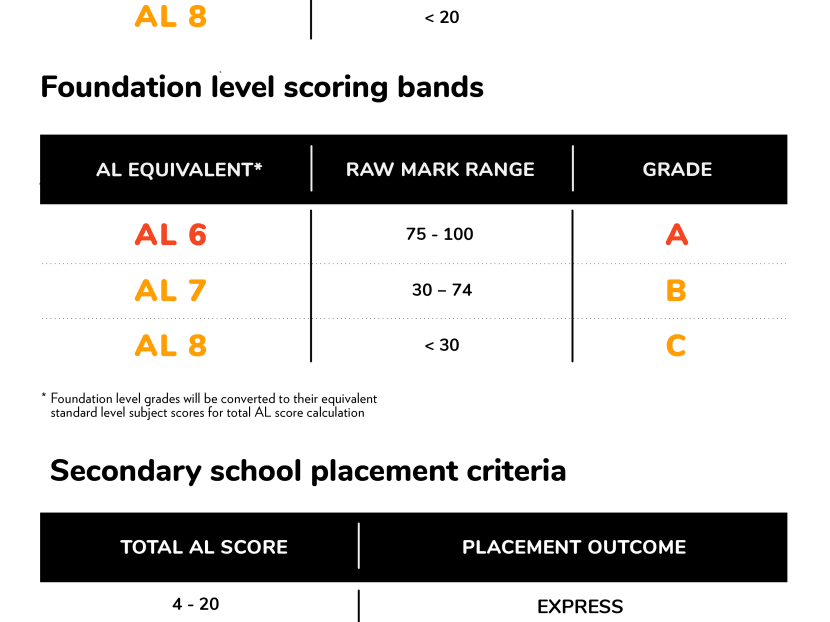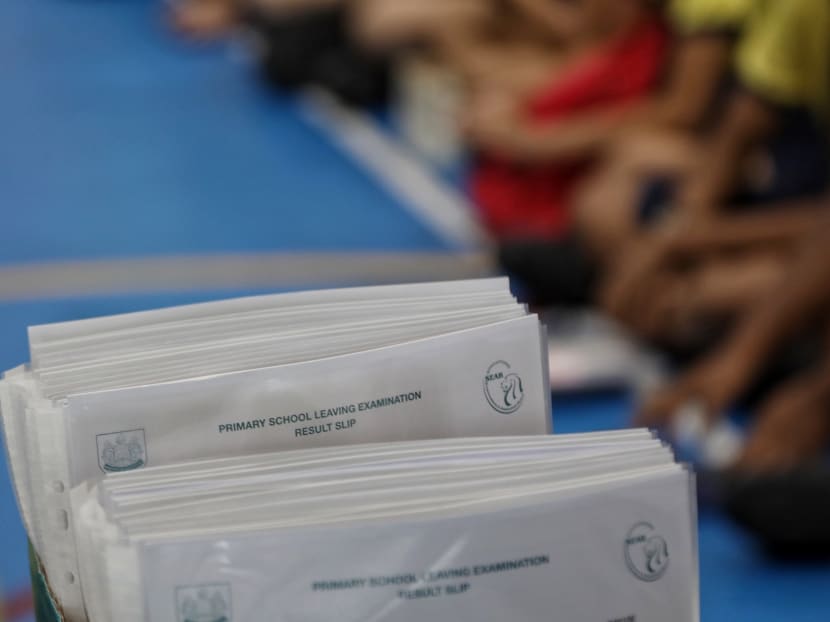PSLE revamp — don’t neglect the ‘average’ student
I heard about how a primary school student who had not fared too well in the Singapore system found herself amongst the top of her class Down Under, having moved to Australia recently.
I heard about how a primary school student who had not fared too well in the Singapore system found herself amongst the top of her class Down Under, having moved to Australia recently.
This is not an uncommon story, one that seems to indicate how tough and rigorous our education system is.
It is also a system that is rightly evolving, to focus less on grades and examinations to one that is more well-rounded.
The Government’s 2016 announcement to get rid of a decades-old tradition of having T-scores for the Primary School Leaving Examination (PSLE) is part of that change.
Replacing that will be a new Achievement Level (AL) scoring system, and the Ministry of Education (MOE) this week announced more details in relation to secondary school posting to help familiarise students and their parents before the new system kicks in next year.
Current Primary 5 students who will be the first batch to face the new PSLE changes have just received their year-end examination results.
Some parents have expressed some concern to me that with the new system, kids scoring 60s or so appear to have fewer options for secondary schools.
Under the new system, the ALs are narrow for the top students.
For every five marks, there is a new band, enabling the so-called branded secondary schools to better differentiate the “qualities of the students” and get the talent they want.
This also means it remains highly competitive if you want to enter top institutions such as Raffles Institution and Hwa Chong Institution.
While this is absolutely reasonable, the odd phenomenon is that the bands get wider as marks get lower.
From a five-mark gap for students scoring above 75, there is a 10-mark gap for the AL5 band and more astonishingly, a 20-mark gap for AL6 band (students scoring 45-64 marks).

Under the new indicative secondary school entry point system, if you were to score 64 for all four subjects, you would be in Normal (Academic), a stream that has a history of social stigma and is meant for the weaker students.
Scoring 64 marks in an exam is not superb but the student is not extremely weak too. He or she is average.
At 12 years of age, it should be okay to be average because you are still finding your niche, still growing and maturing.
In the current system, many so-called neighbourhood schools already have a cut-off point of 230, which is roughly the equivalent of 4As.
According to online reports compiled by parents, you need 239 to get into Yishun Town Secondary and Commonwealth Secondary, versus 237 for Maris Stella.
It is not to say that neighbourhood schools cannot aim to get better talent with higher cut-off points.
However, if everyone is gunning for the top and better-performing students, where can the average student go?
Some students lament it is hard to find a school near their homes if they fall below 220 points.
Under the new system, the “average student” may continue to face a lack of choices of schools as schools would continue to keep the cut-off point competitive and the fact that the AL6 band is so broad will mean they could remain unqualified for many schools.
I also wonder if students who score 46 to 64 marks will get the due attention if they are categorised together.
As a tutor, I know that I will need to put different emphasis on a student who has scored 46 marks and one who got 64 marks.
However, under the new system, teachers would not be able to tell them apart in a big class as they would have entered the school with the same grade.
It could also demoralise some students because of their perception that they have not been given priority, no matter how untrue that could be.
The weak student who has failed the exam with 46 marks will have no incentive to work harder since the next band will be at a seemingly unattainable 65 marks; the average student with 64 marks will be dejected as he is not reaping the rewards of his hard work.
This is akin to the middle-child syndrome where the parents spend more time on the eldest and the youngest and subconsciously forget the middle child.
My biggest worry is the potential of these “average kids” is compromised because we had labelled them too early in life.
At 12 years old, if you are short of options or told you are not the best, even though you are really not doing too badly, it does put a dent in your morale.
But these children have such a long path ahead of them and there is no knowing who will be the one with the real potential.
A parent confided that she “worries” for the average student with this new system as a 60-70 mark student is categorised with a lower grade.
Another laments how a student who is used to scoring 50 marks will feel crestfallen an improvement of 10 marks will do nothing to improve his fate.
A student I spoke to chortled at the change, saying: “There are still numbers. Stress will still be there. It won’t make much of a difference.”
Going forward, I hope we can be fairer to the average kids.
Perhaps we can regulate how schools set their cut-off points more stringently.
There is also a case to be made for increasing the number of bands between 46 and 64 marks so there are more incentives to do better and it is easier for schools to know who is weaker/stronger and focus on their fortes and weaknesses.
To be fair to the administrators at MOE, it is an arduous task revamping a system so ingrained in Singaporeans.
The policy makers are definitely trying to improve the system, but what I am arguing for is a bit more attention on the masses.
While there are still secondary schools available for them, these may not be the most suitable or may not have the subject combination the students desire.
I am also not saying the Australian system is better. An Aussie friend who had her children in Singapore primary schools was awed by how rigorous the system was, and how prepared the school was when the circuit breaker was introduced.
One may also argue that this is a hard fact of life and all the students need to do is to work harder. That is not wrong.
But I am arguing we could cut 12-year-olds some slack at this juncture, as many are still maturing and take time before they fully blossom.
It is not wrong to groom the gifted, but we should also not ignore the huge bulk of average students who are sandwiched in the crevasse of the academically strong and the weak.
These students will be the pillar of Singapore’s society and economy.
At the end of the day, we must remember they are only 12 year olds. As much as we do not want to label them, the system inadvertently places labels on them when they meet rejections due to their average results.
I have students who sometimes tell me they give up in class games because they know they won’t beat the “smarter” kids.
I am not asking for a perfect system but perhaps one that is slightly more equitable. We do not want them to give up so early in life, regardless of whether it is a frivolous class game or in life, because they have a bright future ahead of them.
Give them the morale booster they deserve.
ABOUT THE AUTHOR:
Lim Wei Yi is the co-founder of education centre Study Room. A former journalist, he also teaches at tertiary institutions.










